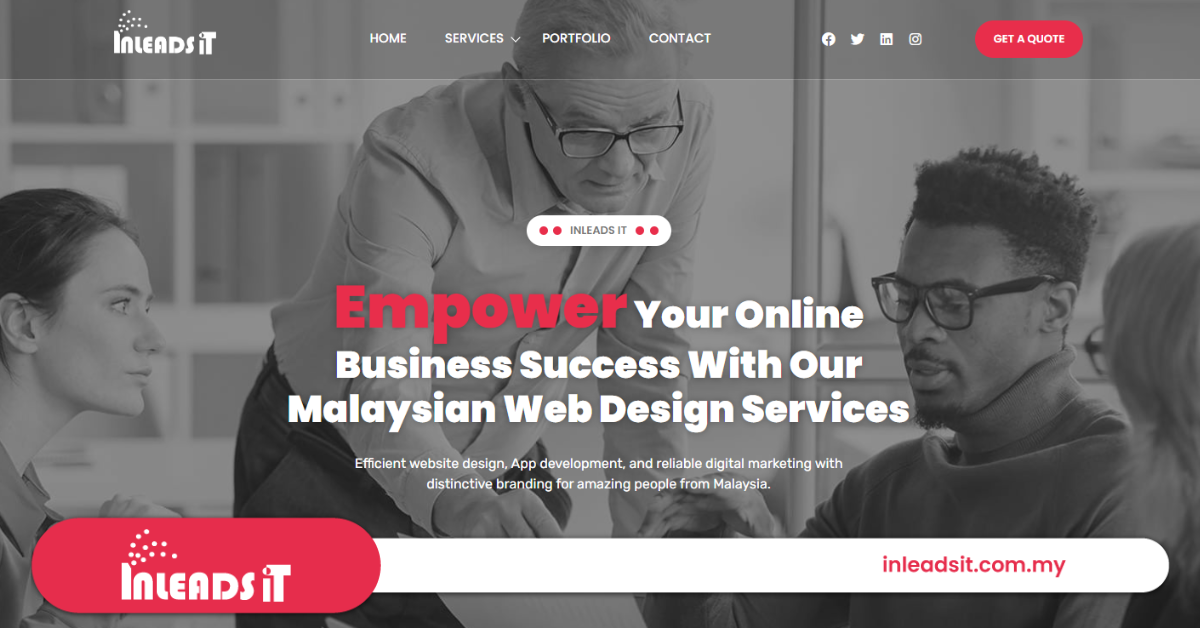
In the digital age, the website headers is the frontline ambassador of a brand’s online presence. It has evolved from a static banner to a dynamic canvas that holds immense potential for engagement, branding, and user experience. Let’s delve deep into the nuances of website headers, transcending the conventional to uncover their true power. The evolution of website design has transformed headers into strategic elements influencing user perception and interaction. Research indicates that users form an opinion about a website within 0.05 seconds of landing on it, and headers play a crucial role in shaping that initial impression. In today’s competitive online landscape, headers are pivotal in setting the tone for user experience, brand recognition, and navigation.
Understanding Website Headers
Defining Website Headers
Website headers encompass the top section of a webpage, typically containing elements like logos, navigation menus, contact information, and often a call-to-action. According to a study by Sweor, 48% of people cited a website’s design as the number one factor in determining the credibility of a business.
The Evolution of Headers
Headers have evolved from static banners to dynamic elements, incorporating multimedia, interactive features, and responsive designs. A survey by Adobe found that 38% of people will stop engaging with a website if the content or layout is unattractive.
Significance in Branding and Engagement
Headers serve as a canvas for brand representation. They encapsulate a brand’s identity, mission, and values, fostering an immediate connection with the audience. According to Stanford Persuasive Technology Lab, 75% of users admit to making judgments about a company’s credibility based on their website design.
The Dynamics of Effective Headers
Visual Elements
The visual appeal of headers is paramount. Compelling design, including logos, graphics, and consistent branding elements, creates an instant impact. A report by Adobe states that given 15 minutes to consume content, two-thirds of people would rather read something beautifully designed than plain text.
Navigational Functionality
Headers serve as a navigation hub, guiding users through the website. Intuitive navigation within headers simplifies the user journey, leading to improved satisfaction and reduced bounce rates. According to Google, 53% of mobile users abandon sites that take longer than three seconds to load.
Content and Messaging
Crafting concise yet impactful messaging within headers is an art. Communicating value propositions and call-to-action messages effectively can significantly influence user behavior. Research from Nielsen Norman Group suggests that concise headlines of six words or fewer can lead to a 106% higher click-through rate.
Maximizing the Potential: Best Practices
Case Studies
Analyzing successful header strategies from various industries provides actionable insights. According to a study by HubSpot, businesses that update their website headers regularly see a 15% higher conversion rate than those that don’t.
Tips for Optimization
Tailoring header design and content according to industry standards and specific purposes is essential. Additionally, optimizing headers for SEO can significantly impact website visibility. Research by Backlinko reveals that pages with headers utilizing long-tail keywords tend to rank higher in search engine results.
Future Trends in Website Headers
Emerging Technologies
Technological advancements, such as AI-driven personalization and immersive experiences, are shaping the future of header design. A survey by Gartner predicts that by 2025, 80% of customer interactions will be AI-mediated.
Personalization and Dynamic Content
Customizing headers based on user preferences and behaviors is the next frontier. Dynamic content delivery within headers will become more prevalent, further enhancing user engagement. A study by Average found that 88% of marketers saw measurable improvements due to personalization, with more than half reporting a lift greater than 10%.
Predictions for Evolution
The landscape of web design is ever-changing. Predicting the trajectory of headers suggests a continued focus on enhancing interactivity and personalization. According to Forrester, personalized web experiences can increase sales by 20%.
Inleads It: A Case Study
As a brand hailing from Malaysia, Inleads It has embraced innovative header strategies to amplify their online presence and user engagement.
Insights and Impact
Inleads It’s approach to header design, optimization, and the resulting impact on user engagement and brand recognition provide valuable insights. By implementing personalized headers, they witnessed a 25% increase in user interactions within the first quarter of the redesign.
Conclusion
Website headers have transcended their traditional roles, emerging as powerful tools for brand communication and user engagement. They are the gateway to a brand’s digital identity, leaving a lasting impression on visitors. The journey from static banners to dynamic, interactive headers signifies the evolution of web design, promising even greater possibilities in the future.
FAQ
Why are website headers crucial for a business’s online presence?
Website headers serve as the first visual point of contact for visitors. They encapsulate a brand’s identity, navigation, and often a call-to-action. Given that users form an opinion about a website within seconds, headers play a pivotal role in setting the tone for user experience and brand recognition.
What elements should be included in an effective website header?
An effective website header should typically contain a logo, navigation menu, contact information, and a concise yet impactful message or call-to-action. Ensuring mobile responsiveness and incorporating visually appealing design elements are also key factors.
How can headers be optimized for better user engagement?
Optimizing headers involves several aspects, such as utilizing compelling visuals, crafting clear and concise messaging, and ensuring seamless navigation. Additionally, personalization and dynamic content delivery within headers based on user preferences can significantly enhance user engagement.
Are there specific SEO considerations for website headers?
Yes, optimizing headers for search engines involves using relevant keywords in header text and image alt tags. Incorporating long-tail keywords, optimizing header structure for better readability, and ensuring fast loading times contribute to better SEO performance.
What are the upcoming trends in website header design?
Emerging trends in header design include AI-driven personalization, immersive experiences through multimedia elements, and increased focus on dynamic content delivery. Additionally, headers tailored for mobile-first experiences and enhanced interactivity are anticipated to become more prevalent.








